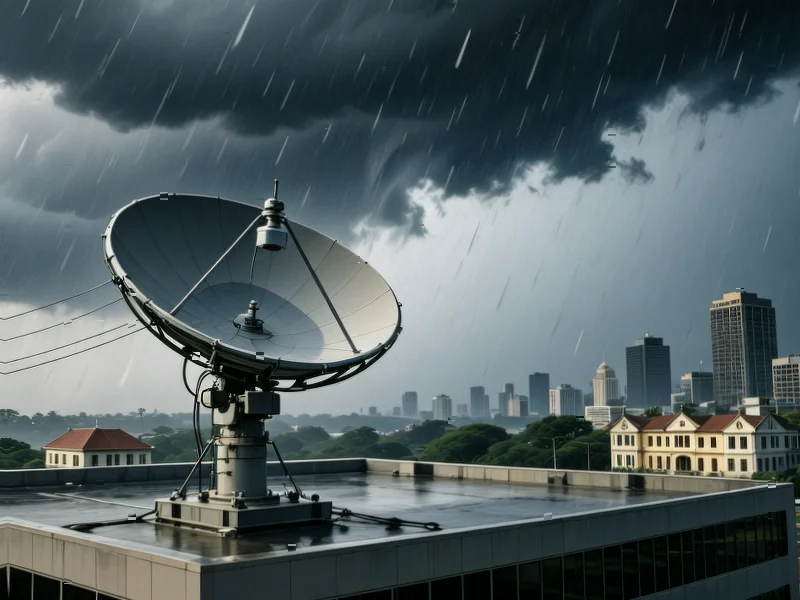According to Fast Company, the State Department has enlisted Starlink, the satellite internet service operated by Elon Musk‘s SpaceX, to support its staff in Jamaica as Hurricane Melissa, a Category 5 storm, made landfall on Tuesday. Agency officials confirmed they have “pre-provisioned Starlink in Jamaica and will use it for communications if necessary,” with embassy staff likely using Starshield—the national security version of the service—while smaller mobile teams would deploy the consumer Starlink service for travel within the country. This emergency deployment demonstrates both the critical importance of satellite-based internet during natural disasters and the growing reliance of the U.S. government on SpaceX technology across multiple agencies including the National Science Foundation and Department of Homeland Security. The situation highlights how satellite connectivity has become essential infrastructure when ground-based communications fail during severe weather events.
Table of Contents
The Evolution of Satellite Communications in Disaster Response
What makes this deployment particularly significant is how it represents the maturation of Low Earth Orbit (LEO) satellite technology for emergency response. Traditional satellite communications have been available for decades, but systems like Starlink offer dramatically different capabilities. Unlike geostationary satellites that orbit at 22,000 miles above Earth, LEO constellations operate at altitudes between 340-1,200 miles, reducing latency from 600+ milliseconds to under 50 milliseconds. This enables real-time applications that were previously impossible—video conferencing for coordination, live streaming for damage assessment, and cloud-based systems that require constant connectivity. The ability to deploy rapidly and provide broadband-level speeds makes these systems fundamentally different from the satellite phones and limited-bandwidth terminals that dominated disaster response for the past thirty years.
The Double-Edged Sword of Government Reliance on Private Technology
The growing dependence on Starlink across multiple government agencies raises important questions about strategic infrastructure control. While the technology clearly provides critical capabilities, having essential communications dependent on a single private company—particularly one led by a controversial figure like Elon Musk—creates potential vulnerabilities. There are legitimate concerns about what happens if corporate priorities shift, if political disagreements affect service availability, or if technical issues arise that the government cannot directly address. This situation mirrors broader tensions in the space industry, where NASA and the Department of Defense increasingly rely on commercial providers while maintaining limited government-owned alternatives. The emergency in Jamaica demonstrates both the incredible value of these partnerships and the strategic risks they entail.
Caribbean Communications Infrastructure Vulnerability
Jamaica’s particular vulnerability to tropical cyclones makes satellite backup systems especially critical. The island nation’s telecommunications infrastructure faces multiple threats during major hurricanes—tower collapses, power grid failures, fiber optic cable damage, and flooding of critical network facilities. What many don’t realize is that even when some infrastructure survives, network congestion can render remaining systems unusable as everyone attempts to connect simultaneously. The geography of Jamaica presents additional challenges, with mountainous terrain that can block signals and remote communities that may be isolated for days after a storm. Satellite systems bypass these terrestrial limitations entirely, providing connectivity regardless of what happens to ground-based infrastructure.
The Future of Disaster Preparedness Technology
Looking beyond the immediate crisis, this deployment signals a shift in how governments worldwide will approach disaster preparedness. We’re likely to see standardized satellite emergency response kits becoming as common as generators and water supplies in diplomatic and aid organizations. The next evolution will involve integrating these systems with other emerging technologies—drone-based damage assessment that streams video via satellite, IoT sensors that monitor structural integrity and environmental conditions, and AI systems that coordinate resource allocation based on real-time data. The challenge will be developing interoperability standards so that multiple satellite providers can be used simultaneously, preventing single-point failures while maintaining the rapid deployment capabilities that make these systems valuable in time-sensitive emergencies.


